

THE ONE BIG BEAUTIFUL BILL FORCES CHANGES TO
Cynthia Bautista
By KYLE GREENAWALT Reporter
By HENRY CRAIG Reporter
Students that pursue higher education often rely on financial aid to cover the often steep price of tuition. According to the United States Department of Education College Scorecard, approximately 19% of all students taking out federal student loans applied through the Free Application for Federal Student Aid.
As the FAFSA application reopens, many changes have been made on the national level that will affect what aid is available to students across the nation, as well as at Weber State University.
The recent passing of H.R. 1, better known as the One Big Beautiful Bill Act, has brought significant changes to financial aid. These changes range from new payment plans to adjustments in what assets are used to determine financial need. The bulk of these changes do not go into effect until 2026.
One noteworthy change to the application for financial aid is how certain assets are characterized. After the H.R. 1 changes, assets such as family farms, small commercial fishing businesses or family businesses will not be included in the financial aid calculations. This should allow for people with wealth in the aforementioned assets to qualify for financial aid when they otherwise would not.
The Pell Grant has also received changes, now covering only the direct cost of schooling. In practice, this means that individuals who have received enough in scholarships to cover the cost of schooling will no longer be eligible to receive the Pell Grant. Previously, students could receive outside scholarships in addition to the Pell Grant and use that money to help cover the associated costs of living. Students will no longer be able to do this.
Aside from the qualification process, H.R. 1 has changed the amount graduate students can receive in the form of student loans. The bill has implemented a borrowing cap of $20,500 per year, and no individual is eligible for more than $100,000 in student loans total. In the past, students were able to take out loans equal to the cost of their graduate program, with a total loan cap of $138,500.
EFFECTS OF H.R. 1: CHANGES TO FAFSA
The parent PLUS loans now have a cap of $20,000 per year and $65,000 per child.
The last significant change impacts students’ options for repaying their loans. Under the new system, there are two repayment plans. The standard plan assigns students a period of 10-25 years (based on the size of their debt) to repay the loan. The debtors then pay in equal monthly installments until the debt is paid or forgiven.
The Repayment Assistance Plan is not a fixed price, but it is instead based on the debtor’s income. Debtors earning between $10,000 and $20,000 will pay 1% of their income each month; those earning between $20,000 and $30,000 will pay 2%, and the pattern continues. The maximum payment is 10% of monthly income for those earning over $100,000. For those making under $10,000 there is a minimum monthly payment of $10.
With these changes to repayment options comes a change to loan forgiveness. In the past, after 20-25 years, students would be eligible for loan forgiveness. Under the new system, debtors will be eligible for forgiveness after 360 payments have been made, in effect extending the duration till loan forgiveness to 30 years.
Weber State University students have begun to apply for financial aid through FAFSA. Applications opened Oct. 1, and students are encouraged to apply as soon as they can to assist in ensuring sooner approvals and quicker access to funds approved through the application process.
Students who are looking for other financial assistance can also find it through Weber State, as the Basic Needs Center also hosts events to assist students in learning how to budget and apply for scholarships and loans.
Amongst all the new changes to FAFSA, students are encouraged to check Weber State’s website to find resources and answers to any questions concerning the application process and important dates that they may need to pay attention to. Weber State has many avenues that will assist students who struggle to understand or have questions about how to fill out the application or the things that the application itself can cover.
Weber State’s Financial Aid and Scholarships Department website features a section focused solely on FAFSA to relieve stress from students about the process of the ap-
plication. The website includes a link to applications that students may go through by themselves; however, another link available allows students to connect with someone who can walk them through the scholarship and FAFSA application process.

Center.

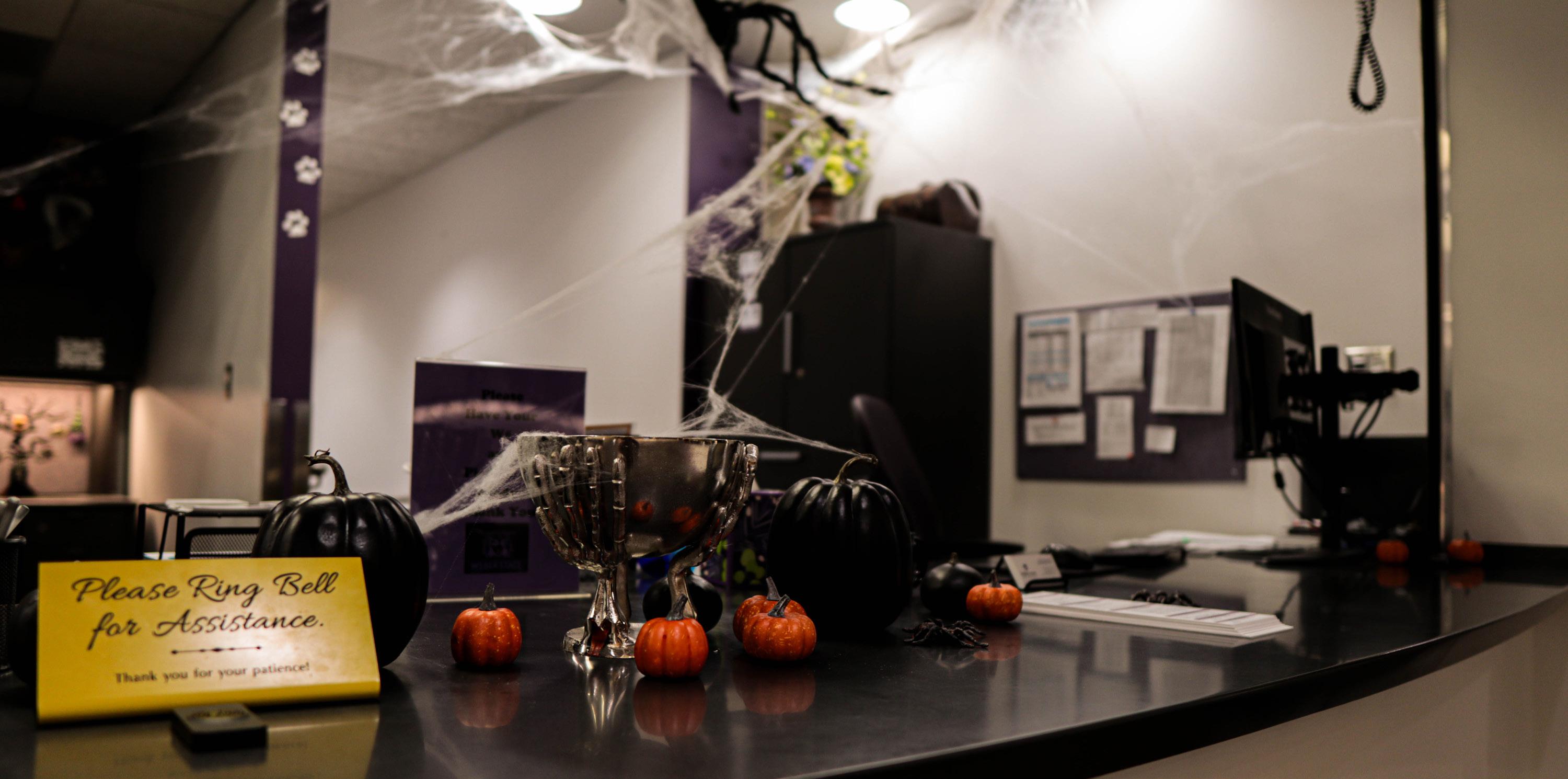
TOP: The financial aid office located in the Student Services building.
BOTTOM: The front desk of the financial aid and scholarships office, decorated for Halloween.
Traducido por DAVID ROMAN AROS
Co-Editor
Por KYLE GREENAWALT
Reportero
Por HENRY CRAIG
Reportero
Los estudiantes que cursan estudios superiores suelen depender de ayudas económicas para cubrir el elevado coste de la matrícula. Según el College Scorecard del Departamento de Educación de los Estados Unidos, aproximadamente el 19 % de todos los estudiantes que solicitan préstamos federales para estudios lo hacen a través de la Solicitud Gratuita de Ayuda Federal para Estudiantes.
Con la reapertura de la solicitud FAFSA, se han realizado muchos cambios a nivel nacional que afectarán a las ayudas disponibles para los estudiantes de todo el país, así como para los de la Universidad Estatal de Weber. La reciente aprobación de la ley H.R. 1, más conocida como One Big Beautiful Bill Act, ha traído cambios significativos a la ayuda financiera. Estos cambios van desde nuevos planes de pago hasta ajustes en los activos que se usan para determinar la necesidad financiera. La mayoría de estos cambios no entrarán en vigor hasta 2026.
Un cambio notable en la solicitud de ayuda financiera es cómo se caracterizan ciertos activos. Tras los cambios de la H.R. 1, activos como las granjas familiares, las pequeñas empresas pesqueras comerciales o las empresas familiares no se incluirán en los cálculos de la ayuda financiera. Esto debería permitir que las personas con patrimonio en los activos mencionados puedan optar a la ayuda financiera cuando, de otro modo, no podrían hacerlo.
La beca Pell también ha sufrido cambios, y ahora solo cubre el coste directo de la escolarización. En la práctica, esto significa que las personas que hayan recibido suficientes becas para cubrir el coste de la escolarización ya no podrán optar a la beca Pell. Anteriormente, los estudiantes podían recibir becas externas además de la beca Pell y utilizar ese dinero para ayudar a cubrir los gastos de manutención asociados. Los estudiantes ya no podrán hacerlo.
Aparte del proceso de calificación, la H.R. 1 ha cambiado la cantidad que los estudiantes
EFECTOS DEL H.R. 1: CAMBIOS A FAFSA
de posgrado pueden recibir en forma de préstamos estudiantiles. El proyecto de ley ha establecido un límite de endeudamiento de 20,500 dólares al año, y ninguna persona puede optar a más de 100,000 dólares en préstamos estudiantiles en total. En el pasado, los estudiantes podían solicitar préstamos equivalentes al coste de su programa de posgrado, con un límite total de 138,500 dólares. Los préstamos PLUS para padres tienen ahora un límite de 20,000 dólares al año y 65,000 dólares por hijo.
El último cambio significativo afecta a las opciones de los estudiantes para devolver sus préstamos. Con el nuevo sistema, hay dos planes de devolución. El plan estándar asigna a los estudiantes un plazo de entre 10 y 25 años (en función del importe de su deuda) para devolver el préstamo. Los deudores pagan entonces cuotas mensuales iguales hasta que la deuda se haya pagado o condonado.
El Plan de Asistencia para el Reembolso no tiene un precio fijo, sino que se basa en los ingresos del deudor. Los deudores que ganen entre 10,000 y 20,000 dólares pagarán el 1 % de sus ingresos cada mes; los que ganen entre 20,000 y 30,000 dólares pagarán el 2
%, y así sucesivamente. El pago máximo es el 10 % de los ingresos mensuales para aquellos que ganan más de 100,000 dólares. Para aquellos que ganan menos de 10,000 dólares, hay un pago mínimo mensual de 10 dólares.
Estos cambios en las opciones de reembolso traen consigo un cambio en la condonación de préstamos. En el pasado, tras un periodo de entre 20 y 25 años, los estudiantes podían optar a la condonación de sus préstamos. Con el nuevo sistema, los deudores podrán optar a la condonación tras haber realizado 360 pagos, lo que en la práctica amplía la duración hasta la condonación del préstamo a 30 años.
Los estudiantes de la Universidad Estatal de Weber han comenzado a solicitar ayuda financiera a través de la FAFSA. El plazo de solicitud se abrió el 1 de octubre y se anima a los estudiantes a que presenten su solicitud lo antes posible para garantizar una aprobación más rápida y un acceso más rápido a los fondos aprobados a través del proceso de solicitud.
Los estudiantes que busquen otro tipo de ayuda financiera también pueden encontrarla a través de la Universidad Estatal de We-
ber, ya que el Centro de Necesidades Básicas también organiza eventos para ayudar a los estudiantes a aprender a elaborar presupuestos y solicitar becas y préstamos. Entre todos los nuevos cambios introducidos en la FAFSA, se recomienda a los estudiantes que consulten el sitio web de la Universidad Estatal de Weber para encontrar recursos y respuestas a cualquier pregunta relacionada con el proceso de solicitud y las fechas importantes a las que deben prestar atención. La Universidad Estatal de Weber dispone de muchos recursos para ayudar a los estudiantes que tengan dificultades para comprender o tengan preguntas sobre cómo rellenar la solicitud o sobre lo que esta cubre. El sitio web del Departamento de Ayuda Financiera y Becas de Weber State cuenta con una sección dedicada exclusivamente a la FAFSA para aliviar el estrés de los estudiantes sobre el proceso de solicitud. El sitio web incluye un enlace a las solicitudes que los estudiantes pueden rellenar por sí mismos; sin embargo, hay otro enlace disponible que permite a los estudiantes ponerse en contacto con alguien que les guíe a través del proceso de solicitud de becas y de la FAFSA.

FAFSA
2026-27

Complete the FAFSA (Free Application for Federal Student Aid) to get money for school including SCHOLARSHIPS, PELL GRANTS, WORK-STUDY and LOANS.
Complete the FAFSA now to ensure your financial aid is ready for fall 2026 - summer 2027 semesters. Priority deadline is April 1.
NEED HELP COMPLETING FAFSA? weber.edu/fafsahelp
FAFSA ONLINE APPLICATION: studentaid.gov
The free application takes about 10 minutes and is only done once at weber.edu/apply (Concurrent Enrollment students, complete your status switch during your senior year of high school using the “Status Switch” app in your eWeber portal or by visiting weber.edu/status.)
#2 #3
It only takes about 30 minutes to complete. You complete FAFSA your senior year of high school and again every year that you will be in school.
It only takes a few minutes and you only have to create it once. This account cannot be created until WSU has received your FAFSA.
FAFSA Get Admitted for FREE to Weber State University Financial Aid Verify Fill out the Planned Enrollment Levels
This only takes a moment to report your planned enrollment, living arrangements and your interest in work study. This will help us award you more accurately.
Scholarship Universe will match you with potential WSU and approved nationwide scholarships based on your profile and FAFSA information. All you have to do is apply for the scholarships you choose.
Incoming students are automatically considered for academic scholarships but should complete their Scholarship Universe Profile to find more.

HOW TO SAVE A LIFE: QUESTION, PERSUADE, REFER
By HANNAH RICHARDS Reporter
On Oct. 22, Weber State University will be holding a suicide prevention training on campus that is open to all students and community members of Ogden City. Weber State is partnering with community organization NUHOPE to put on the training.
“Last year, we reached over 8,000 students … we are seeing an uptick in the number of students we’re teaching,” said Lindsey Pulver, NUHOPE program specialist.
The training is created by the Question, Persuade, Refer Institute, also known as QPR. The training will be 50 to 60 minutes with
presentations and roleplays. Every year, the training information is updated by the QPR Institute, and can be filtered according to specific locations to reflect the data relevant to the area the training is held in.
“We front load our presentation with a lot of data about what’s happening in our nation, in our state, and right here at Weber State,” said Dianna Abel, executive director of student well-being.
According to Abel, students who participate in this training have the opportunity to become, in a way, student ambassadors on campus who can encourage others to aid in the prevention of suicide on campus.
“People are starting to recognize that
talking about it isn’t making the problem worse, but not talking about it does,” Pulver said.
The way people talk about suicide and the prevention of it can be important to reducing the stigma that surrounds it. As Pulver said, addressing the issue won’t make the issue worse, it will help.
“We need to use language, we need to not dance around it and use euphemisms,” Abel said. Social media has contributed to the problem of using indirect language when talking about suicide, and the ineffectiveness of preventing suicide.
To correct this issue of indirect language, the roleplays offered in this training will help
students to feel more confident in their ability to address sensitive topics like suicide.
There are three opportunities to attend this training on campus, so if students are unable to attend the October training there will be another in November as well.
“We never want somebody to walk away from a situation where you think, I’m not sure that person’s safe and have not said anything about it,” Abel said. Part of the reason why the university offers multiple training sessions is to empower students to never walk away.
Ultimately, the goal of these training sessions is to “teach people how to persuade someone to stay alive and seek help,” Abel said.

CÓMO SALVAR UNA VIDA: PREGUNTA, PERSUADE Y REFIERE
Traducido por IVANNA OLACHEA GONZALEZ
Traductora
Por HANNAH RICHARDS
Reportera
El 22 de octubre, la Universidad de Weber State impartirá una capacitación en prevención del suicido en el campus que está abierta para todos los estudiantes y miembros de la comunidad de Ogden City. Weber State se está asociando con la organización comunitaria NUHOPE para llevar la capacitación a cabo.
“El año pasado, llegamos a más de 8,000 estudiantes… estamos viendo un aumento en el número de estudiantes a los que enseñamos”, dijo Lindsey Pulver, especialista en programas de NUHOPE.
La capacitación está creada en la Pregunta, Persuasión, Referir Instituto, también conocido como QPR en Inglés. La capacitación será de 50 a 60 minutos con presentaciones y juegos de rol. Cada año, la información de la capacitación es actualizada por el Instituto QPR y puede ser filtrada según ubicaciones específicas para reflejar los datos relevantes para el área en la que se imparta la capacitación.
“Adelantamos nuestras presentaciones con bastantes datos acerca de lo que está pasando en nuestra nación, en nuestro estado y justo aquí en Weber State”, dijo Dianna Abel, directora ejecutiva de bienestar estudiantil.
Según Abel, los estudiantes que participan en esta capacitación tienen la oportunidad de convertirse, de alguna manera, en estudiantes embajadores del campus quienes pueden animar a otros a ayudar en la prevención del suicido en el campus.
“Las personas están empezando a reconocer que hablar sobre esto no está empeorando el problema, pero no hablarlo lo hace”, dijo Pulver.
La manera en la que las personas hablan sobre el suicido y la prevención de este puede ser importante para reducir el estigma que lo rodea. Como dijo Pulver, abordar el problema no hace el problema peor si no que ayudará.
“Tenemos que usar el lenguaje, no podemos andarnos con rodeos ni utilizar eufemismos”, dijo Abel. Las redes sociales han
contribuido al problema del uso de un lenguaje indirecto al hablar sobre el suicido y a la ineficacia de la prevención del suicido. Para corregir el problema del lenguaje indirecto los juegos de rol ofrecidos en esta capacitación ayudará a los estudiantes a sentirse más confiados en su capacidad para abordar temas delicados como el suicido.
Hay tres oportunidades para asistir a esta
capacitación en el campus, entonces si los estudiantes no pueden asistir a la capacitación de octubre habrá otra en noviembre también.
“Nunca queremos que alguien se aleje de una situación en la que pienses, No estoy seguro/a de que esa persona está a salvo y no he dicho nada al respecto”, dijo Abel. Parte de la razón de porque la universidad of-
rece varias sesiones de capacitación es para empoderar a los estudiantes y nunca dar la espalda.
En definitiva, el objetivo de estas sesiones de capacitación es para “enseñar a la personas como persuadir a alguien para que siga vivo/a y busque ayuda”, dijo Abel.

Dianna Abel, directora ejecutiva del bienestar de los estudiantes.
Weber









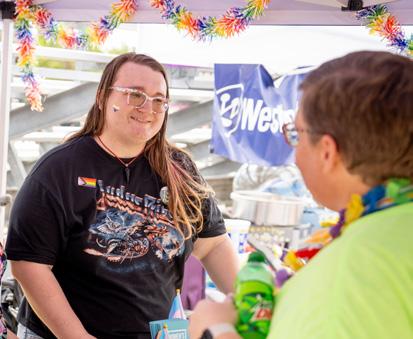
STUDENT SUCCESS CENTER

Succeed in College. Thrive in Life.
Make the SSC your hub for academic support, campus connections, and personal growth.
We Can Help You: Stay on track academically
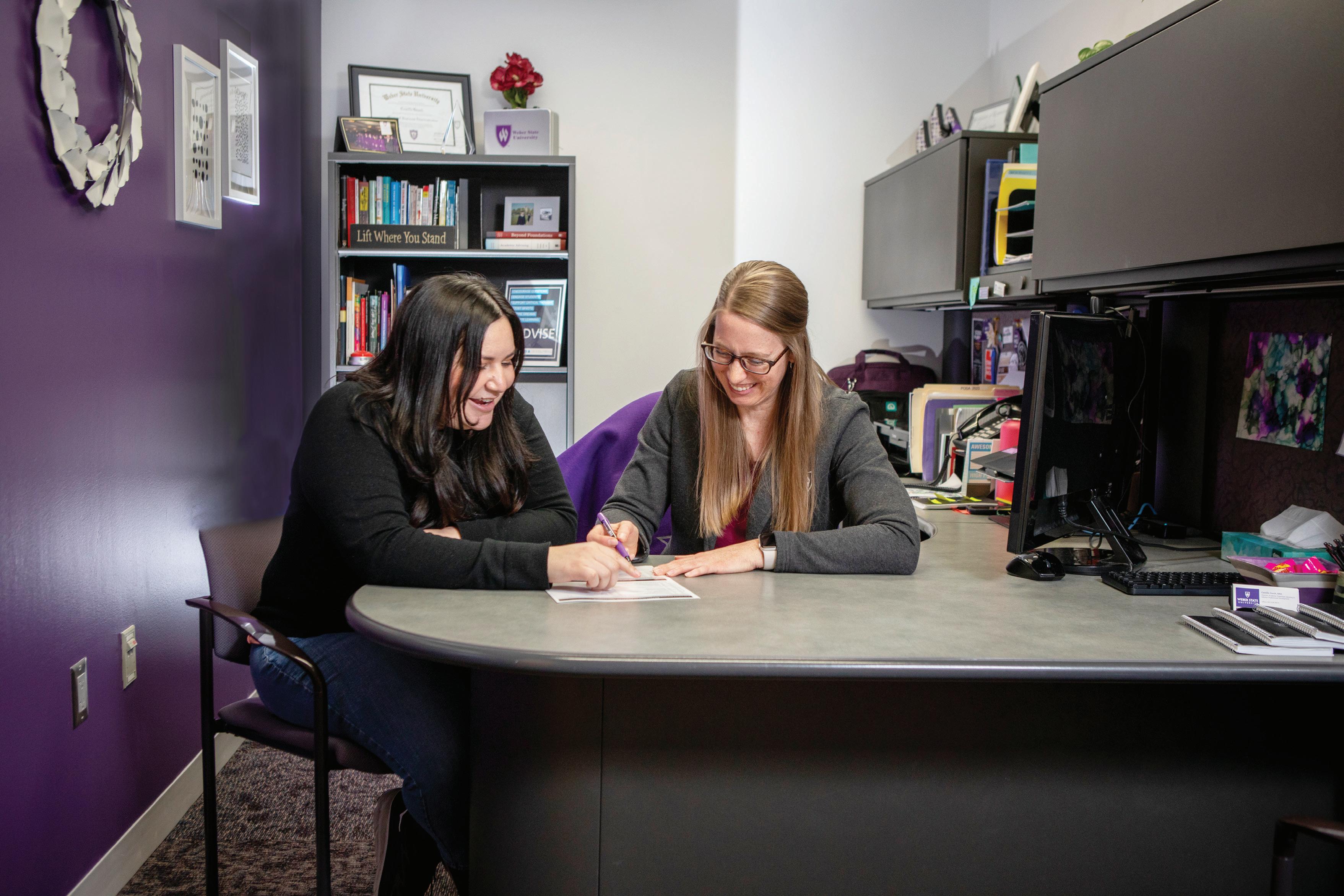
Find resources like tutoring and financial aid Get involved and build your community
Navigate challenges with confidence
Come see us in the Shepherd Union Gallery. Or contact us: studentsuccesscenter@weber.edu 801-626-7006 @wsuStudentSuccess
Meet with your advisor to save time and money by planning your course schedule together.

Scholarship Universe has WSU scholarships and approved nationwide scholarships that you are eligible for.



WILDCATS CONQUER VIKINGS 43–27
By GAVIN NELSON Editor
After losing two straight games, the Weber State University football team won their first Big Sky Conference game of the season on the road against the Portland State University Vikings.
The Vikings started with the ball, but a three-and-out forced a punt, in which the Wildcats took the ball and drove down to the Portland State 29-yard line. After being stopped on third down, the Wildcats sent out senior kicker Sloan Calder, who hit a 48-yard field goal to give the Wildcats a 3–0 lead over the Vikings.
On the Vikings’ next drive, sophomore cornerback Ishaan Daniels intercepted PSU quarterback John-Keawe Sagapolutele and returned it for the Wildcats’ first touchdown of the day; however, Calder’s extra point attempt was blocked, making the game 9–0.
The Vikings then got the ball back, drove down the field, and made a 27-yard field goal to make it 9–3.
After the Wildcats were stopped on fourth down, the teams traded punts to end the first quarter.
In the second quarter, the Vikings hit another field goal, this time from 36 yards out. The Wildcats were then stopped on downs again, and the teams traded punts again.
The Wildcats got good field position after a 14-yard punt return by senior running back Bird Butler, to give the Wildcats the ball at the Viking 32-yard line. However, after a four-yard rush by redshirt freshman running back Chauncey Sylvester, who was starting in place of the injured Davion Godley, junior quarterback Dijon Jennings threw his first career interception to Portland State safety Bryson Ross.
Fortunately for the Wildcats, they got the ball back after an interception by junior cornerback Montae Pate. Despite getting to the Viking 17-yard line, the Wildcats had to settle for another field goal from Calder, who hit from 34 yards out to make it 12–6 at the end of the half.
On the first drive of the second half, Weber drove down the field, finishing off with a oneyard rushing touchdown from Sylvester.
On Portland State’s first play from scrimmage on the following drive, Sagapolutele was intercepted by junior safety Kao Hansen.
After starting again in Portland State territory, the Wildcats’ drive stalled, leading to another Calder field goal, from 44 yards away, making the game 22–6.
On the next drive, Sagapolutele was sacked by freshman defensive end Chevy Robinson, who forced the fumble and then recovered the football, giving the Wildcats the ball at the Vikings’ 16-yard line.
The Wildcats capitalized with a five-yard rushing touchdown by senior running back Zach Hrbacek to make it 29–6 to end the quarter.
On the first drive of the fourth quarter, the Vikings brought in backup quarterback Tyrese Smith, who led the Vikings down the field, finishing with a 15-yard rushing touchdown from Smith to make it 29–13.
After a Wildcat punt, Hansen had his second interception of the day, picking off Smith and returning it to the PSU one-yard line.
In the following play, Hrbacek fumbled the ball at the goal line, but it was picked up by center Will Way, who scored the rare offensive lineman touchdown. His teammates mobbed him in celebration of the feat.
After another Portland State punt, Weber
State put in their backups, which led to walkon running back Spencer Ferguson scoring his first career touchdown on a 24-yard rush, making the game 43–13.
The Vikings scored two touchdowns to make the game closer at the end, but the Wildcats came out on top 43–27.
Jennings finished the day with 123 yards passing with zero touchdowns and one interception. Sylvester finished the day with 135 yards rushing and one touchdown.
The Wildcat defense had a day of their own, forcing five turnovers: four interceptions and one fumble.
“Really proud of the guys answering the bell this week,” Head Coach Mickey Mental said.
The Wildcats return to Ogden to take on the Eastern Washington University Eagles on Oct. 25 at 1 p.m.
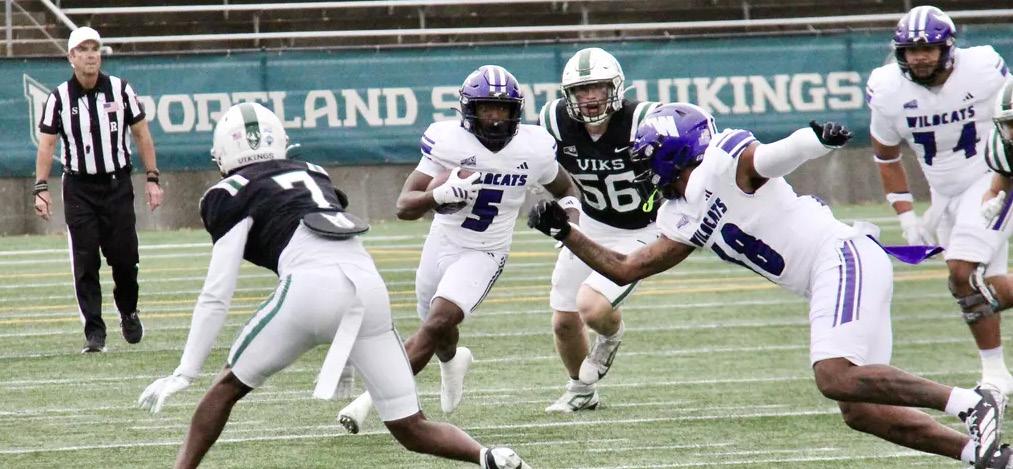
Weber State Athletics
Weber State University players go after a Portland State University player with the ball.
Co-Editor
LOS WILDCATS CONQUISTAN A LOS VIKINGS 43–27
Por GAVIN NELSON Editor
Tras perder dos partidos consecutivos, el equipo de fútbol americano de la Universidad Estatal de Weber ganó su primer partido de la temporada de la Conferencia Big Sky a domicilio contra los Vikings de la Universidad Estatal de Portland.
Los Vikings comenzaron con el balón, pero un tres y fuera les obligó a patear, y los Wildcats tomaron el balón y avanzaron hasta la yarda 29 de Portland State. Tras ser detenidos en tercera oportunidad, los Wildcats enviaron al pateador senior Sloan Calder, quien anotó un gol de campo de 48 yardas para dar a los Wildcats una ventaja de 3–0 sobre los Vikings.
En la siguiente jugada de los Vikings, el cornerback de segundo año Ishaan Daniels interceptó un pase del quarterback de PSU John-Keawe Sagapolutele y lo devolvió para anotar el primer touchdown del día de los Wildcats; sin embargo, el intento de punto extra de Calder fue bloqueado, dejando el marcador en 9–0.
Los Vikings recuperaron el balón, avanzaron por el campo y anotaron un gol de campo de 27 yardas, poniendo el marcador en 9–3. Después de que los Wildcats fueran detenidos en la cuarta oportunidad, los equipos intercambiaron patadas de despeje para terminar el primer cuarto.
En el segundo cuarto, los Vikings anotaron otro gol de campo, esta vez desde 36 yardas. Los Wildcats volvieron a ser detenidos en downs y los equipos volvieron a intercambiar punts.
Los Wildcats consiguieron una buena posición en el campo tras una devolución de punt de 14 yardas del corredor senior Bird Butler, lo que les dio la posesión del balón en la yarda 32 de los Viking. Sin embargo, tras una carrera de cuatro yardas del corredor de primer año Chauncey Sylvester, que sustituye al lesionado Davion Godley, el quarterback junior Dijon Jennings lanzó la primera intercepción de su carrera al safety de Portland State Bryson Ross.
Afortunadamente para los Wildcats, recuperaron el balón tras una intercepción del cornerback junior Montae Pate. A pesar de llegar a la yarda 17 de los Vikings, los Wild-
cats tuvieron que conformarse con otro field goal de Calder, que acertó desde 34 yardas para poner el 12–6 al final de la primera parte.
En la primera jugada de la segunda mitad, Weber avanzó por el campo y terminó con un touchdown de una yarda de Sylvester.
En la primera jugada de Portland State desde la línea de scrimmage en la siguiente serie ofensiva, Sagapolutele fue interceptado por el safety junior Kao Hansen.
Tras volver a empezar en territorio de Portland State, el avance de los Wildcats se estancó, lo que llevó a otro gol de campo de Calder, desde 44 yardas, poniendo el marcador en 22–6.
En la siguiente jugada, Sagapolutele fue derribado por el ala defensiva novato Chevy Robinson, quien forzó el balón suelto y luego lo recuperó, dando a los Wildcats la posesión del balón en la yarda 16 de los Vikings. Los Wildcats aprovecharon la oportunidad
con un touchdown de cinco yardas del corredor senior Zach Hrbacek, dejando el marcador en 29–6 al final del cuarto.
En la primera jugada del cuarto cuarto, los Vikings sacaron al quarterback suplente Tyrese Smith, quien llevó al equipo por el campo y terminó con un touchdown de 15 yardas, poniendo el marcador en 29–13.
Tras un punt de los Wildcats, Hansen consiguió su segunda intercepción del día, interceptando un pase de Smith y devolviéndole hasta la yarda 1 de PSU.
En la siguiente jugada, Hrbacek perdió el balón en la línea de gol, pero fue recogido por el centro Will Way, quien anotó un touchdown poco habitual para un liniero ofensivo. Sus compañeros de equipo lo rodearon en celebración del logro.
Tras otra patada de despeje de Portland State, Weber State sacó a sus suplentes, lo que llevó al corredor suplente Spencer Ferguson a anotar su primer touchdown en su
carrera con una carrera de 24 yardas, poniendo el marcador en 43–13.
Los Vikings anotaron dos touchdowns para acercarse en el marcador al final del partido, pero los Wildcats se impusieron por 43–27.
Jennings terminó el día con 123 yardas por pase, sin touchdowns y con una intercepción. Sylvester terminó el día con 135 yardas por carrera y un touchdown.
La defensa de los Wildcats tuvo un gran día, forzando cinco pérdidas de balón: cuatro intercepciones y un balón suelto.
“Estoy muy orgulloso de los chicos que han respondido al reto esta semana”, dijo el entrenador jefe Mickey Mental.
Los Wildcats regresan a Ogden para enfrentarse a los Eagles de la Eastern Washington University el 25 de octubre a la 1 p. m.

Traducido por DAVID ROMAN AROS
Defensa del Weber State University, Kao Hansen (#12), en la cancha durante el partido en contra de Portland State
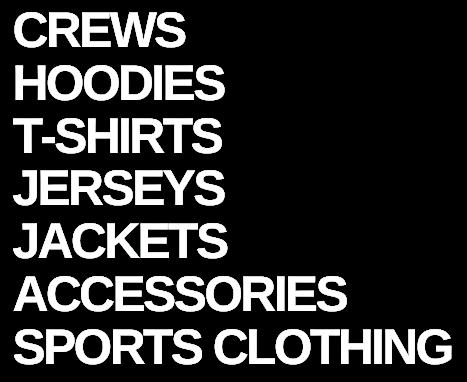







Come chill @ Weber Labs! We have all the gear you need. Visit our
Labs Today!
Want a place to study? Need software and other resources? All students are welcome to visit, work, and relax at the Computer Labs across campus!

Master of Science
Computer Engineering
Computer Science
Electrical Engineering
Systems Engineering
Graduate Certificates
Autonomous Vehicle Software
Computational Data Science and Machine Learning
Material Science & Engineering
Model-Based Systems Engineering
Systems & Sustainable Engineering


WILDCATS FALL TO BENGALS IN REMATCH IN POCATELLO
By GRAYSON FREESTONE Reporter
Just two weeks after beating the Idaho State University Bengals at home, Weber State University volleyball came up short against the Bengals on the road.
Friday’s match started with a back-andforth set that saw no rally longer than three points. The Wildcats came within one play of losing as the Bengals held a 25–24 lead. However, they took the next three on two attack errors and a kill by Jayda Tupea, securing a 27–25 win.
From there, things took a turn for the worse. Weber was hurt early by a 7–0 deficit, before making it a 5–10 lead. The Bengals put things away with 6-point and 7-point rallies in a 25–8 match-tying win.
The Wildcats shook off the Bengals’ avalanche with a competitive third set. The two teams saw 13 ties on the way to a Wildcats’ 24–23 lead. They couldn’t score that last point that would’ve given them a 2–1 lead,
which became a theme.
Weber State came within one play of a set win seven times, but couldn’t put things away. ISU went on to take the set 32–30 after a 3-point rally that included two errors by Weber.
In the fourth set, ties once again became common. The two sides saw nine ties up until a 23–23 score. Unfortunately, the road team wasn’t able to make the clutch plays needed to push the game to a deciding fifth set—the Bengals finished the match with two kills.
ISU’s home win went eerily similar to the two teams’ matchup at the beginning of the month. The Bengals got a 1–0 lead in Ogden before the Wildcats bounced back, winning the next three sets to add to the win column.
Weber State will continue its three-game road trip with two games in Montana against Montana State University and the University of Montana. They will then return home on Oct. 30 to take on Portland State University to finish the month.

Take Care of Your MENTAL AND PHYSICAL HEALTH
COUNSELING & PSYCHOLOGICAL
- SERVICES CENTER -
WE CAN HELP
· Manage stress
Cope with depression and/or anxiety
Improve relationships
· Build self-esteem
· Resolve grief
Explore other concerns
MEET WITH US
801-626-6406 weber.edu/CounselingCenter
WSU Davis: Building D2, Room 262
WSU Ogden: Student Services Center, Suite 280
STUDENT MEDICAL CARE
Ogden Clinic at Professional Center North 4650 Harrison Blvd. Ogden, UT 801-475-3010
Free care for common illnesses and injuries, select lab testing, reproductive healthcare, physical exams and more.

Weber State University opposite hitter, Rose Moore (#5), spikes the ball over the net to the opposite team.
LOS WILDCATS PIERDEN LA REVANCHA CONTRA LOS BENGALS EN POCATELLO
Traducido por LUNA MALAGON SOLORZANO
Traductora
Por GRAYSON FREESTONE
Reportero
Dos semanas después de vencer a los Bengals en la Universidad de Idaho State en casa, el equipo de voleibol de la Universidad de Weber State cayó derrotado ante los Bengals en su campo.
El partido del viernes empezó con un set muy reñido en el que ningún intercambio aseguró más de 3 puntos. Las Wildcats estuvieron a punto de perder, ya que los Bengals mantenían una ventaja de 25–24. Sin embargo, se llevaron los 3 siguiente puntos gracias a dos errores de ataque y un remate de Jayda Tupea, asegurando una victoria de 27–25. Desde ahí, las cosas empeoraron. Weber se vio perjudicado por un déficit de 7–0, antes de remontar hasta ponerse 5–10 por delante. Las Bengals sentenciaron el partido con remontadas de 6 y 7 puntos, ganando por 25–8 y empatando la serie.
Las Wildcats sacudieron el balance de las Bengals con un tercer set competitivo. Los dos equipos empataron 13 veces hasta que los Wildcats se pusieron por delante con un
THE SIGNPOST TEAM
Editor-in-Chief
Nelly Hernandez Tejada nhernandeztejada@mail.weber.edu
Managing Editor James Gordon jamesgordon@mail.weber.edu
Collaboration Editor Bryce Odenthal bryceodenthal@mail.weber.edu
Design & Graphics Editor Izabelle Cordeiro icorderio@mail.weber.edu
Photography Co-Editor Anna Kuglar briannakuglar@mail.weber.edu
Photography Co-Editor A.J. Handley andrewhandley@mail.weber.edu
24–23. No pudieron anotar el último punto que les hubiera dado la ventaja de 2–1, lo que se convirtió en una constante.
Weber State estuvo a una jugada de ganar el set en siete ocasiones, pero no pudo rematar. ISU se llevó el set por 32–30 después de un intercambio de 3 puntos que incluyó dos errores de Webe.
En el cuarto set los empates volvieron a ser habituales. Ambos equipos sufrieron 9 empates hasta llegar al marcador 23–23, Desafortunadamente el equipo visitante no logró realizar las jugadas claves necesarias para llevar el juego a un decisivo quinto set, las Bengals terminaron el juego con dos remates.
La victoria de ISU en casa fue sorprendentemente similar al enfrentamiento entre los dos equipos hace algunos meses. Las Bengals estuvieron 1–0 arriba en Ogden antes de que las Wildcats se hubieran recuperado, ganando los siguientes tres sets para aumentar su racha de victoria.
Weber State continuará su gira de tres partidos como visitante con dos encuentros en Montana contra la Universidad de Montana State y la Universidad de Montana. Estarán volviendo a casa el 30 de octubre para jugar contra La Universidad de Portland State al final del mes.
News Editor
Alfonso Rubio alfonsorubio@mail.weber.edu
Sports Editor Gavin Nelson gavinnelson1@mail.weber.edu
Asst. Sports Editor Brayson Brown braysonbrown@mail.weber.edu
Culture Editor Jared Mitchell jaredmitchell@mail.weber.edu
Chief Copy Editor Mindy Brown mindybrown1@mail.weber.edu
Translation & Asst. Chief Copy Editor Tomas Quintero Uribe tquinterouribe@mail.weber.edu

Jugadora de Volleyball del equipo de Weber State University se
para rematar la pelota hacia el lado opuesto de la cancha.
Translation Co-Editor
Victoria Hernandez victoriahernandez1@mail.weber.edu
Translation Co-Editor
David Roman Aros davidromanaros@mail.weber.edu
Business Manager Robert Steedley robertsteedley@weber.edu
Adviser Jean Norman jeannorman@weber.edu
acerca

